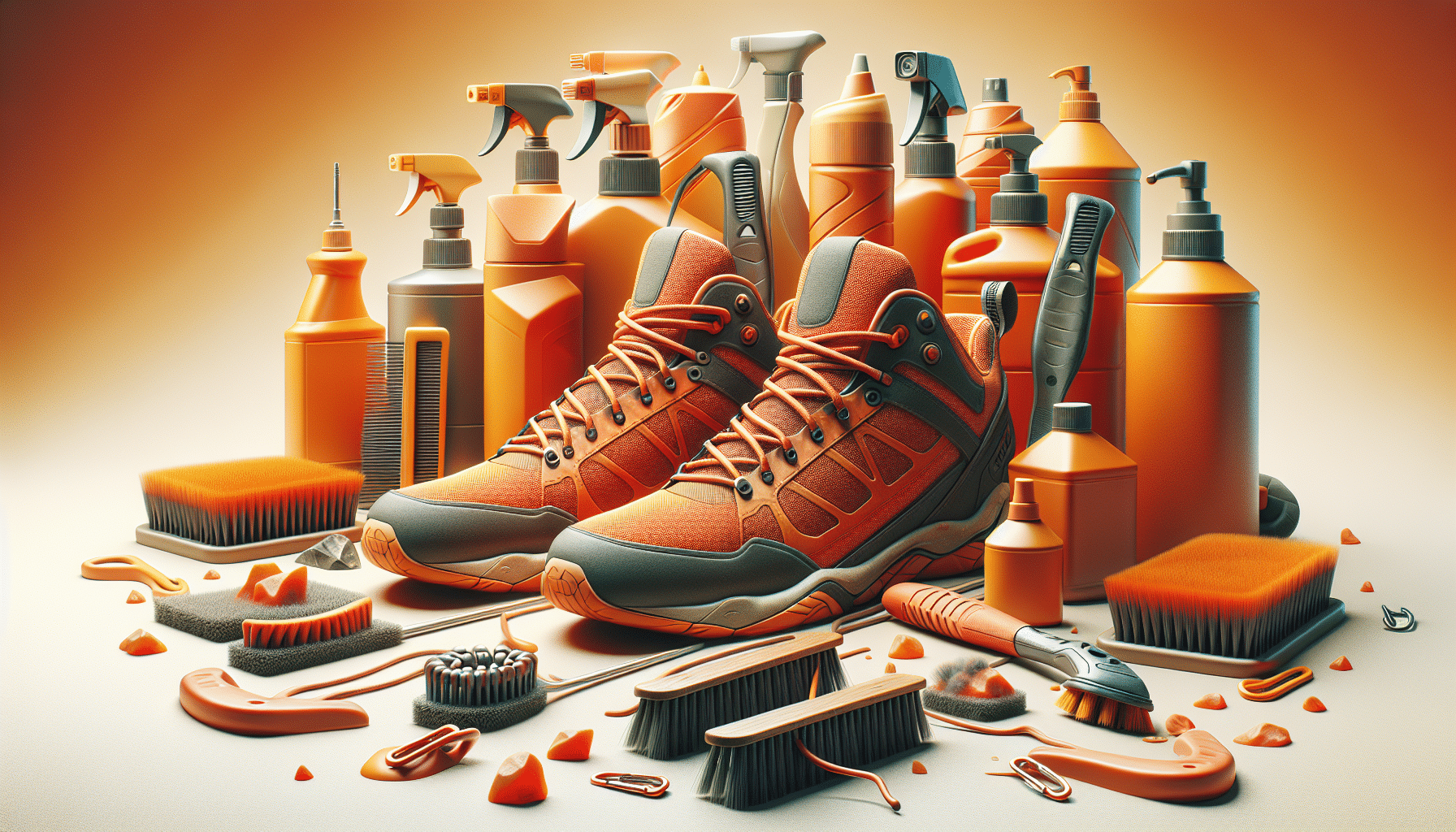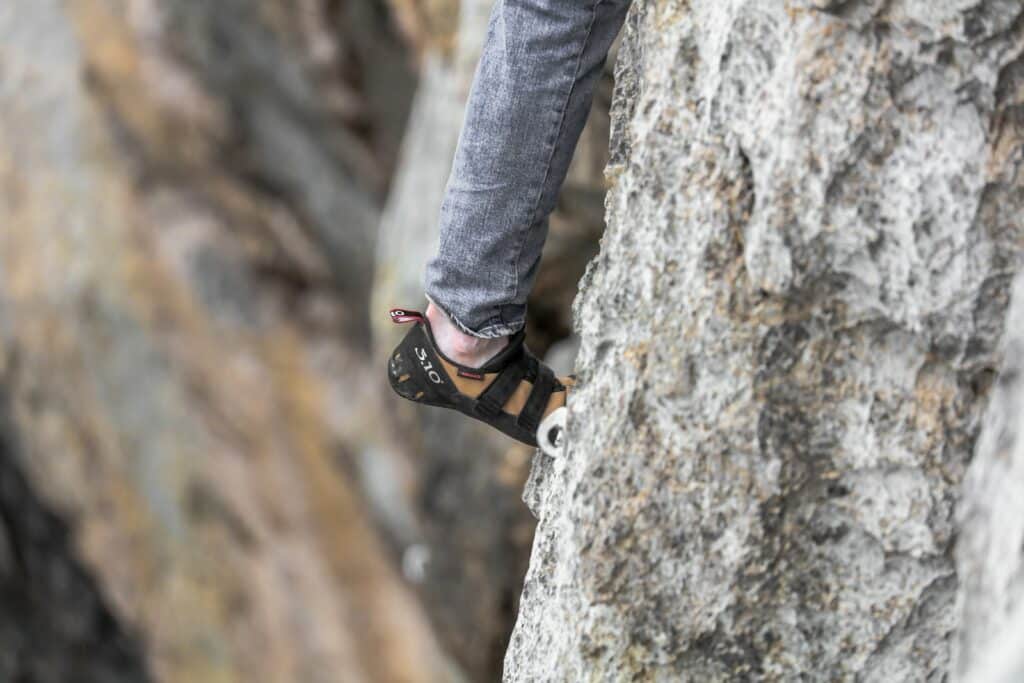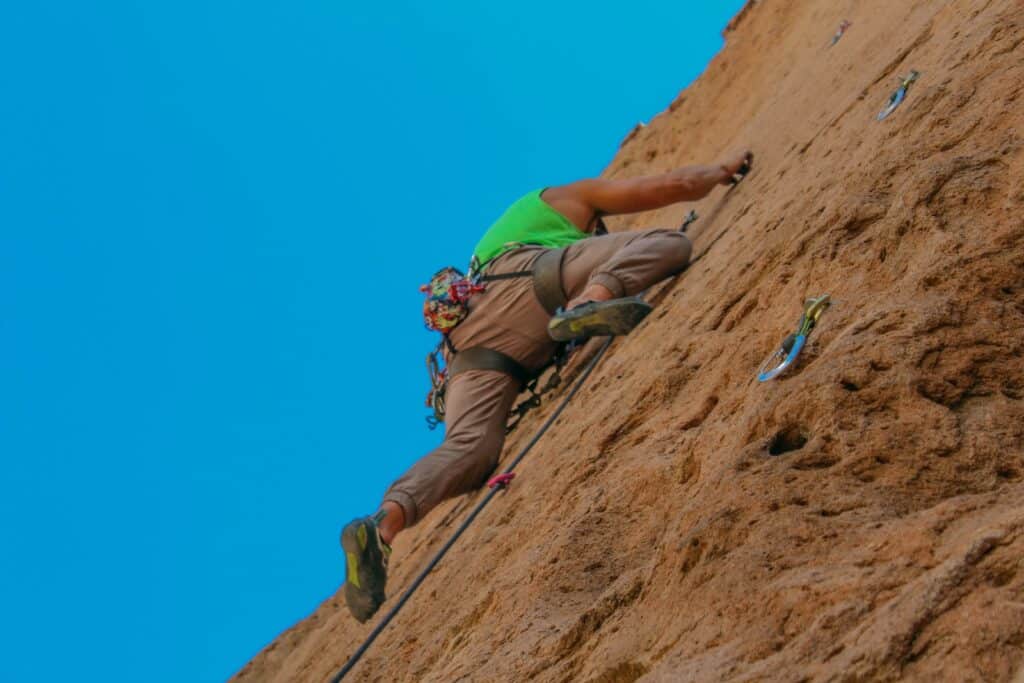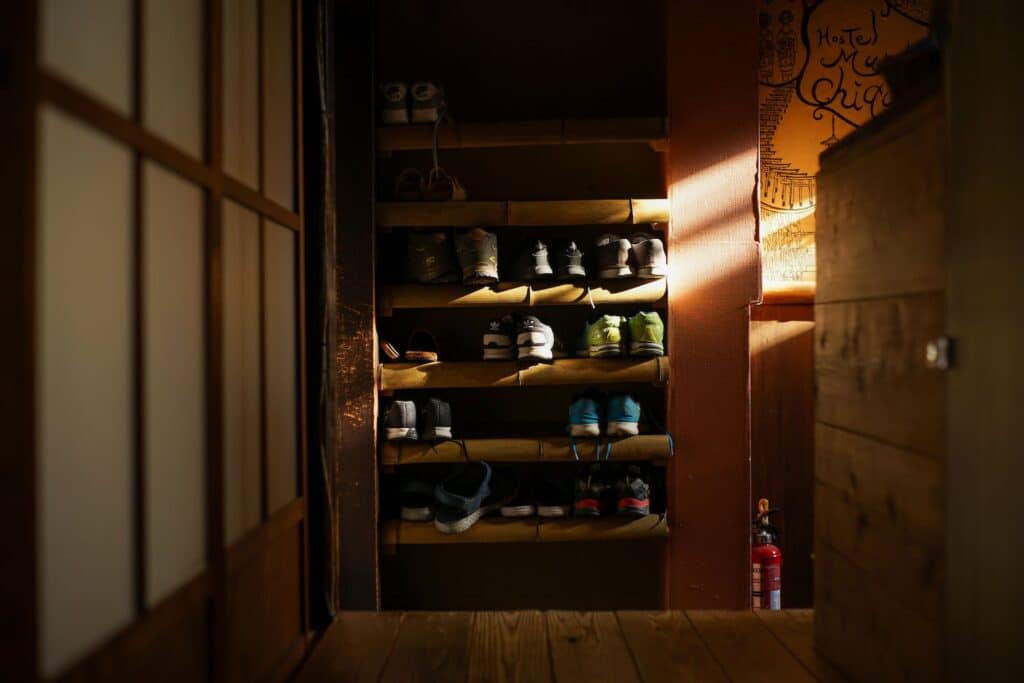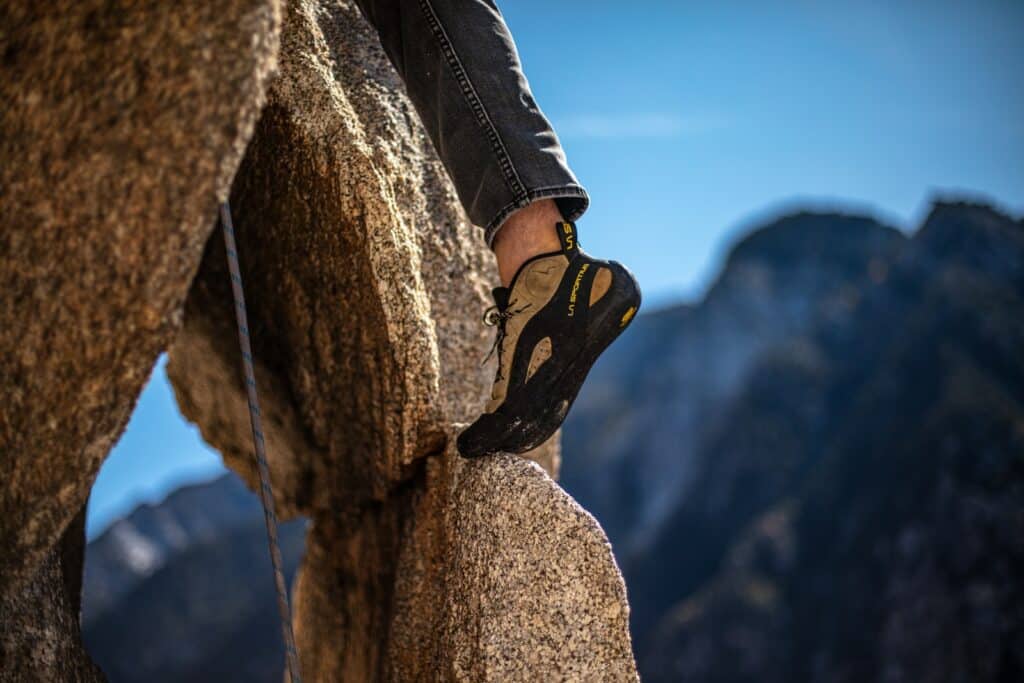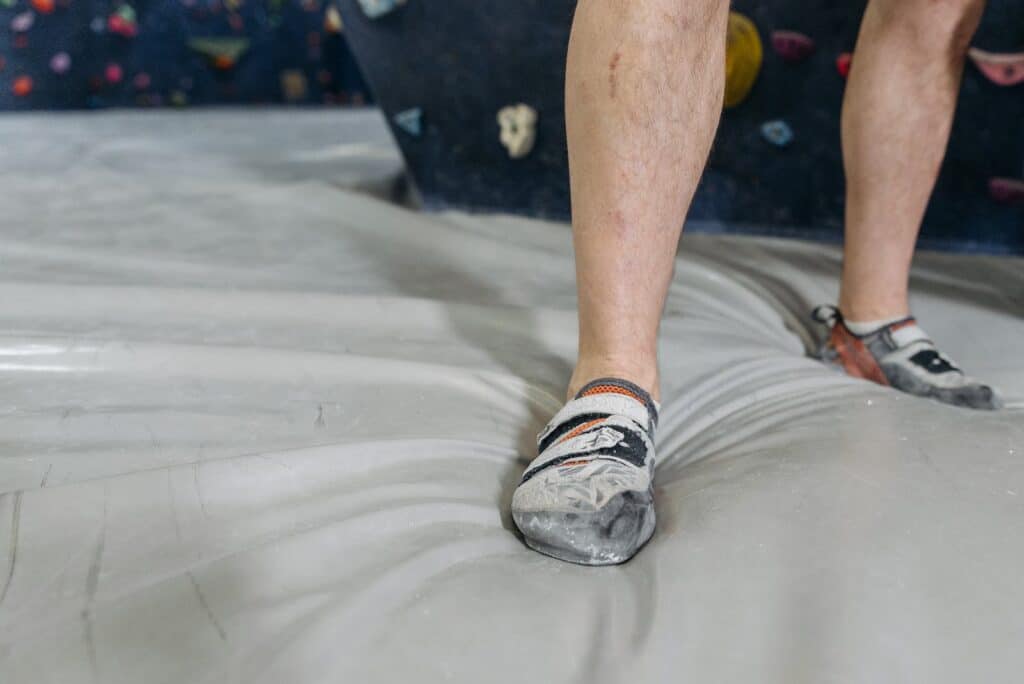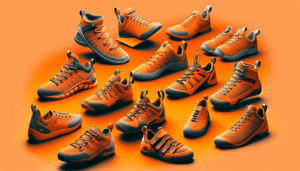Table of Contents
ToggleUnderstanding Climbing Shoes
If you’re just getting started with rock climbing, the first thing you’ll notice is how critical climbing shoes are to your overall performance. These aren’t just your regular shoes; they’re specially designed with specific features to enhance grip, provide optimal sensitivity, and support your foot during your climbs. Let’s break down what makes a climbing shoe so unique!
Anatomy of Climbing Shoes
A climbing shoe typically consists of three main parts: an upper, a midsole, and an outsole. The upper is made of synthetic materials or leather and provides support and protection for your foot. The midsole offers cushioning and support, while the outsole is made of sticky rubber that gives you the traction and grip you need on various types of rock surfaces (Climbing Shoe Review).
Climbing shoes also come with different types of rubber compounds to provide varying levels of friction and durability. Softer rubber compounds offer better grip but wear out faster, while harder rubber compounds provide better durability but may sacrifice some friction. The choice of rubber depends on your climbing style and personal preference (REI).
Additionally, the shape and downturn of climbing shoes can affect performance and comfort. Neutral or flat shoes provide a more relaxed fit and are suitable for all-day climbing or beginners. Moderately downturned shoes offer a balance between comfort and performance and are suitable for a wide range of climbing styles. Aggressively downturned shoes provide maximum power and precision but may sacrifice comfort for longer climbs. The choice of shoe shape depends on your climbing style and personal preference.
For more in-depth information on the technology behind climbing shoes, check out our article on climbing shoe technology.
Different Types of Climbing Shoes
No two climbers are the same, and neither are their shoes! There are different types of climbing shoes designed for specific climbing disciplines and styles. These include neutral shoes, moderate shoes, aggressive shoes, and specialized shoes for bouldering, sport climbing, trad climbing, and crack climbing. Each type of shoe has specific features and characteristics that cater to the demands of the particular climbing style (Climbing Shoe Review).
For instance, climbing shoes with a downturned shape are designed to provide maximum power and precision on steep or overhanging terrain, commonly used in bouldering and sport climbing. On the other hand, climbing shoes with a neutral shape offer a more relaxed fit and are suitable for all-day climbing or beginners, commonly used in trad climbing and multi-pitch routes.
The type of climbing shoe you choose depends on your climbing goals and preferences. It’s important to try on different sizes and models to find the right fit for your foot shape and climbing style (REI). For more guidance on choosing the right type, check out our article on aggressive vs neutral climbing shoes.
Understanding the different types of climbing shoes and their unique features will help you make an informed decision when investing in your first pair. So get excited, because you’re one step closer to finding the perfect pair of climbing shoes that will support you on your climbing adventures!
Investing in Your First Pair
Embarking on your rock climbing journey is an exhilarating adventure and your first pair of climbing shoes will play a key role in this journey. Let’s walk through how to choose the right fit and decide on the right type of shoes for you.
Choosing the Right Fit
The fit of your climbing shoes can make or break your climbing experience. It’s crucial to find a pair that provides a snug, yet not overly tight fit. You want minimal dead space or movement inside the shoe for better sensitivity and control on the rock (Climbing Shoe Review, REI).
When trying on shoes, keep in mind your foot shape. Some shoes are designed for narrow feet, while others are better suited for wider feet. Trying on different brands and models can help you find the right fit for your foot shape (Climbing Shoe Review).
Remember, it’s important to test them out before making a purchase. Climbing shoe fit can vary between brands and models, so visit a climbing gear store and try on different options to find the best fit for your feet. My best advice is to check out our guide on climbing shoe sizing for more detailed information.
Deciding on the Right Type
When it comes to selecting the right type of climbing shoes, your climbing style will have a big influence. Different types of climbing shoes are designed for specific styles of climbing, such as bouldering, sport climbing, trad climbing or crack climbing (REI). Think about the type of climbing you do most often and choose a shoe that is suitable for that style.
If you’re a beginner, a more comfortable and versatile climbing shoe may be a good choice. These shoes typically have a flatter profile and a less aggressive downturn, providing a balance of comfort and performance for a variety of climbing styles (Climbing Shoe Review).
If you’re an advanced climber, you might prefer a more aggressive and specialized climbing shoe that offers maximum performance and sensitivity. These shoes often have a downturned shape and a tighter fit, allowing for precise foot placements and better power transfer.
The type of rock or terrain you’ll be climbing on is also a key consideration. Different shoes have different rubber compounds and tread patterns that are optimized for specific types of rock, such as limestone, granite, or sandstone.
Finally, make sure to explore our climbing shoe technology page to understand more about what goes into making these incredible pieces of gear.
Choosing your first pair of climbing shoes is an exciting step in your climbing journey. Take the time to find the right fit and type for you – your feet (and your climbing) will thank you! Remember, it’s not just about investing in a pair of shoes but also about investing in your climbing future. Happy climbing!
Caring for Your Climbing Shoes
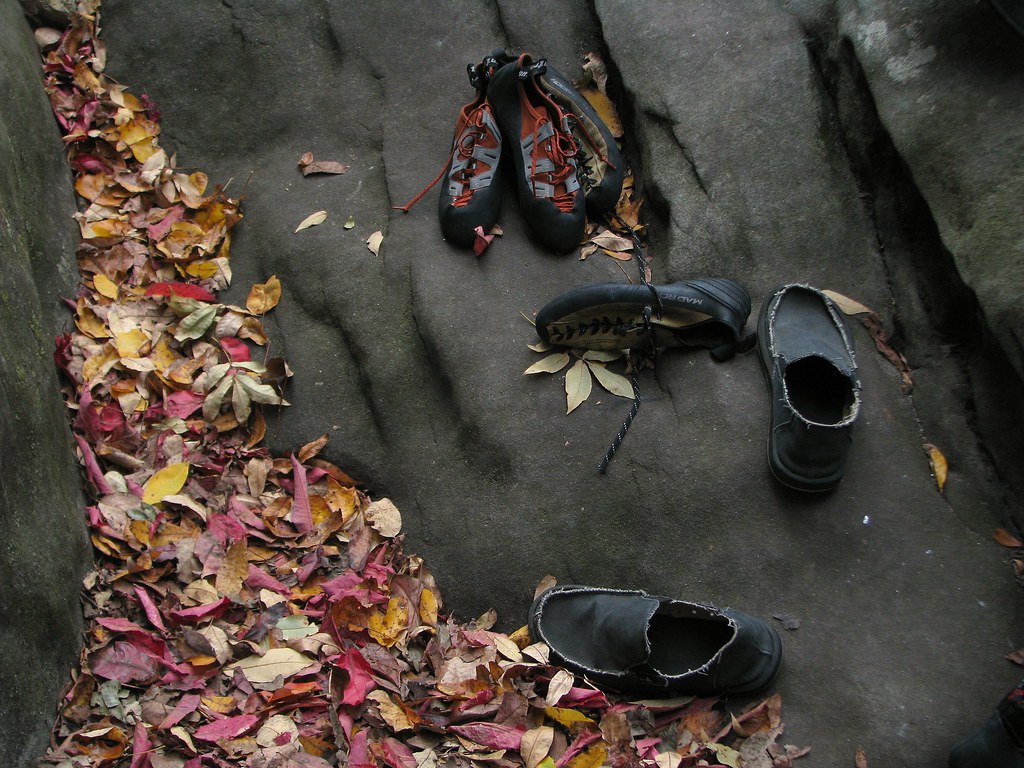
Taking care of your climbing shoes is a crucial part of your climbing journey. Proper maintenance and cleaning can extend their lifespan and ensure they give you the best performance on the rock. Let’s dive into the exciting world of climbing shoe care!
Regular Cleaning Practices
Cleaning your climbing shoes regularly is an essential step in caring for them. Dirty shoes can lose their grip and become less effective on the rock. So, it’s crucial to remove any dirt and debris from the outsole after each climbing session.
Here’s a simple method you can follow:
- Using a soft brush, gently scrub away any dirt or debris on the outsole.
- Mix warm water with a mild soap.
- Dip your brush in the soapy mixture and give your shoes a gentle scrub, focusing on the dirty areas.
- Rinse with clean water, ensuring no soap is left on the shoes.
Remember, avoid using harsh chemicals or abrasive materials that can damage your shoes. With just a few minutes of cleaning after each session, you can maintain the optimal grip of your shoes and enhance their performance.
Deep Cleaning and Odor Control
If you’ve been climbing for a while, you might have noticed that your shoes can start to smell a bit… funky. Don’t worry, it’s normal! But the good news is, you can do something about it.
To eliminate odor from your climbing shoes, try this simple trick. Sprinkle some foot powder or baking soda inside your shoes after each use. These substances help absorb moisture and neutralize the smell. Just remember to tap out any excess powder before your next climbing session.
Following these cleaning practices will keep your climbing shoes in top condition. Remember, proper care not only extends the lifespan of your shoes but also enhances your climbing performance. So, get into the habit of cleaning your shoes regularly and enjoy the benefits!
In the next section, we’ll discuss how to properly store your climbing shoes to maintain their shape and condition. So, stay tuned for more exciting tips on climbing shoe care!
Storing Climbing Shoes Properly
Once you’ve invested in a pair of climbing shoes that you love, it’s important to take good care of them. Proper storage is a key part of climbing shoe care that often gets overlooked. But trust me, it can make a big difference in the life of your shoes!
Ideal Storage Conditions
Heat, humidity, and direct sunlight can be your climbing shoes’ worst enemies. These elements can degrade the rubber soles of your shoes, negatively impacting their grip and performance on the rock. Additionally, these conditions can promote the growth of odor-causing bacteria, which is definitely something I want to avoid! So, it’s important to store your shoes in a cool, dry place to extend their life and keep odors at bay (Climbing Shoe Review, Denver Climbing Company, REI).
A breathable bag or container can be a great option for storing your shoes. This allows air to circulate around your shoes, helping to prevent moisture and odor buildup. Just remember to avoid storing your shoes in direct sunlight or near heat sources, such as radiators or car trunks.
Preserving the Shape of Your Shoes
In addition to choosing the right storage conditions, it’s also important to consider how to preserve the shape of your climbing shoes. After all, a well-fitting shoe is absolutely crucial for performance on the rock, and you don’t want to lose that perfect fit!
One of the best ways to maintain the shape of your shoes is to let them air dry naturally after each climb. Avoid using heat to dry your shoes as this can cause them to shrink or warp. If your shoes get really wet, you can stuff them with newspaper to help absorb the moisture and maintain their shape.
When you’re not using your shoes, store them with the toes pointing upwards. This helps to prevent creasing and maintains the natural arch of the shoes.
Remember, caring for your climbing shoes doesn’t end after you’ve cleaned them. Proper storage is a crucial part of the climbing shoe care process that can prolong the life of your shoes and keep them in top shape for your next climb. And if you’re still unsure about which shoe might be right for you, don’t forget to check out our guides on climbing shoe sizing and climbing shoe types. Happy climbing!
Repairing and Resoling Climbing Shoes
Hey climbers! Let’s talk about extending the life of our beloved climbing shoes. Just like any gear, climbing shoes can wear out over time, but the good news is – we can absolutely extend their lifespan by resoling them!
When to Consider Resoling
So, when should you consider resoling your shoes? A lot of factors come into play, like the type of climbing you do, your skill level, and the quality of your shoe’s construction (Denver Climbing Company). But a general rule of thumb is to look at the thickness of the rubber on your shoe’s sole. If it has worn down to around 3-4 millimeters, it’s probably time to give those shoes some love. Some climbers might even wait until it reaches 2 millimeters, living on the edge, literally!
The Resoling Process
But what does resoling entail? Basically, resoling involves replacing the worn-out rubber sole of your climbing shoe with a new one. This not only extends the lifespan of your shoes by several months or even years, but it also helps restore their performance.
The best part? You can resole your shoes multiple times! That means more climbs, more adventures, and more savings (Climbing Shoe Review).
The key, my climbing friends, is to find a professional resoling service that specializes in climbing shoes. This will ensure your shoes are properly repaired and maintained, keeping you safe and helping you maintain that grip when you need it most.
So next time you see that your shoes’ rubber soles are wearing thin, don’t think of it as the end. Instead, consider it an opportunity to give your shoes a new lease on life, and keep climbing!
For more information on climbing shoe care and other rock climbing topics, check out our other articles on climbing shoe technology, climbing shoe sizing and climbing shoe performance. So, until then, keep climbing and keep those shoes in tip-top shape!
Regular Inspection for Safety
Hello, fellow climbers! So, you’ve got your first pair of rock-climbing shoes and you’re ready to hit the rocks. But wait! Hold on to your excitement for a minute. As much as we love the thrill of the climb, it’s essential to remember that safety is paramount. Part of that safety comes from proper climbing shoe care, and that includes regular inspection for signs of wear and tear. Let’s dive into it!
Signs of Wear and Tear
Just like any other piece of equipment, your climbing shoes are going to show signs of wear over time. We’re talking things like thinning rubber, delamination, or loose stitching. As I learned from REI, catching these issues early can prevent further damage and extend the lifespan of your shoes.
So what are you looking for exactly? Well, you’d want to regularly check the condition of your shoes, including the soles, rand, and toe box, for any signs of wear and tear. Look out for worn-out rubber that’s getting thin. Pay attention to the rand (that’s the rubber part that wraps around your toes). If you’re seeing a lot of wear here, it might be time to think about resoling. Also, keep an eye out for delamination, which is when the layers of your shoe start to separate. Loose stitching is another red flag to watch for.
When to Replace Your Climbing Shoes
Now, I know what you’re thinking, “When do I have to say goodbye to my beloved climbing shoes?” It’s a tough call, but sometimes, when the damage is significant, it’s safer to replace them than repair them. I mean, think about it, your shoes are your connection to the rock. You need them to be in top shape to ensure your safety and performance.
If you’re seeing significant wear on the soles, or if the rand is showing through, it’s probably time for a new pair. Also, if your shoes have delamination that can’t be repaired, or if the fit has become uncomfortable, these are signs that it’s time to retire your old shoes and invest in a new pair.
Remember, it’s not just about the thrill of the climb. It’s also about taking care of ourselves and our equipment to ensure we can keep climbing for many more years to come. So inspect those shoes regularly, keep them clean, and when it’s time, be ready to find your next perfect pair!
For more tips on climbing shoe care and choosing the right pair for you, check out our guides on climbing shoe technology, climbing shoe sizing, and climbing shoe performance. Stay safe and climb on!

